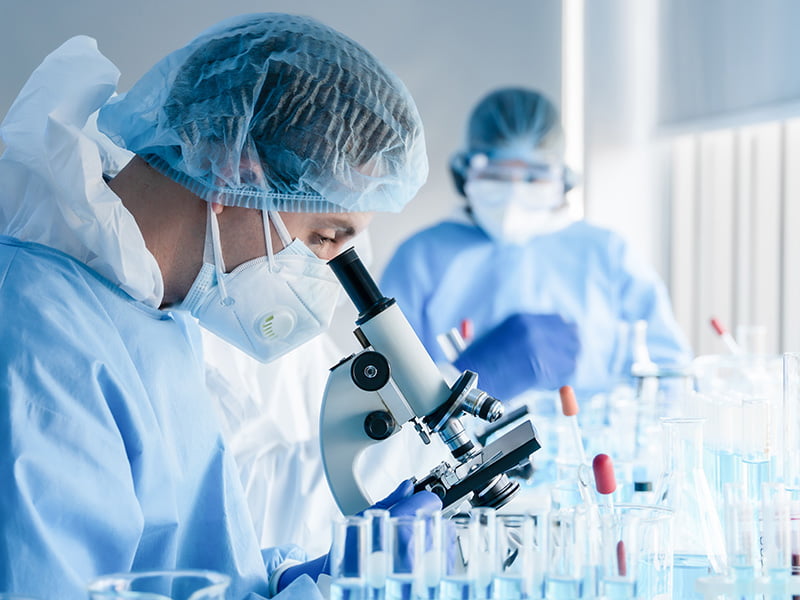Cutting edge NSW biotechs trialling revolutionary stroke treatment, developing world-first therapies for Alzheimer’s disease, and using AI to create complex drugs have shared in $4.5 million from the state’s new BioSciences Fund.
But as the first recipients were celebrated Wednesday, InnovationAus.com can also reveal a massive decrease in promised grants that will see the new fund forced to run on alternate years with existing science funding.
It comes after successive cuts by Coalition and Labor governments to startup funding and while a new innovation plan is still under development.

The Office of the Chief Scientist and Engineer on Wednesday announced RNAfold.AI, Skin2Neuron, and ThromBio as recipients from the first round of the NSW BioSciences Fund.
RNAfold.AI received $1 million to continue its work on AI algorithms and create a new database that can optimise RNA targeting drugs up to clinical trials. Some of the protein targets had previously been considered ‘undruggable’.
The grant will keep the company in the state.
“It enables us to sell down in New South Wales at the UNSW RNA Institute, and leverage the world class science that’s going on here in New South Wales,” co-founder Dr Sarah Diermeier said.
Skin2Neuron, or S2N, received almost $2 million to scale up manufacturing of its regenerative medicine technology that holds potential for fighting Alzheimer’s disease.
The startup, which announced $4 million in private funding earlier this month, now plans to scale up production of the novel cell type it discovered in hair follicles. Its pre-clinical research shows the cell types could replace lost neurons and synapses in ageing and disease.
“Memory is meaning,” S2N founder Professor Michael Valenzuela said.
“Imagine if you could feel some of your most precious memories kind of slipping away. So what Skin2Neuron wants to do is to stop that. We want to reverse that. We want to replace the lost brain cells and synapses which are at the core of Alzheimer’s. And we do that… by exploiting this treasure trove of neural precursors that we have in our own hair.”
The “life saver” funding for the startup will move S2N closer to clinical trials to try and prove what could be the first clinically meaningful treatment of Alzheimer’s disease.
The NSW BioSciences Fund also awarded a $1.5 million grant to ThromBio, which is trying to crack a 40 year pharmaceutical challenge to treat stroke.
The company’s antiplatelet agent showed promising results on a group of 10 trial recipients last year and the funding will support a second phase of a clinical study to determine the optimal dose of its treatment.
“Of the 10 patients that are being treated for stroke now [with the treatment], every one has improved,” ThromBio director Professor Shaun Jackson said.
“And six of the 10 have made a complete recovery… So that’s why we’re so excited.”
Minister for Innovation, Science and Technology Anoulack Chanthivong said the companies are helping to solve pressing real-world problems.
“By giving these companies guidance on commercialising their products, the NSW Government’s [BioSciences Fund] will help grow their businesses contributing to our state’s burgeoning life sciences sector and changing the lives of people around the world.”
The BioSciences Fund supporting the companies was announced last year by the former government, which pledged $40 million to the fund and modelled it on the state’s established and successful Physical Sciences Fund.
But the fund came as part of a $703 million innovation package that was secretly gutted just months after it was announced in 2022 by the Perrottet government.
It also had to survive a pause on innovation grants and eventual cuts to several programs by the current government.
The BioSciences Fund will run only every two years, alternating with the Physical Sciences Fund, meaning science funding has returned to previous levels but has effectively been spread much more thinly across two funds.
Work is underway on a new innovation “blueprint” that the government has flagged will be less “transactional” with researchers and industry. Mr Chanthivong held its latest roundtable in Wollongong on Wednesday.
The BioSciences Fund will open to applicants for its second round next year, with grants expected to be awarded in 2026.
Last week the Minns government shook up the innovation portfolio, including moving the Office of the Chief Scientist and Engineer responsible for the science fund into the Premier’s Department.
Do you know more? Contact James Riley via Email.

